Centralia, PA is a mystery enshrouded in conspiracy theories and government cover-ups. This story starts with a circle. Not a circle drawn in the sand or on a chalk board, but more a circle of motion, in life. A realization of sorts, a realization of circles that continually intertwine like a Möbius strip.
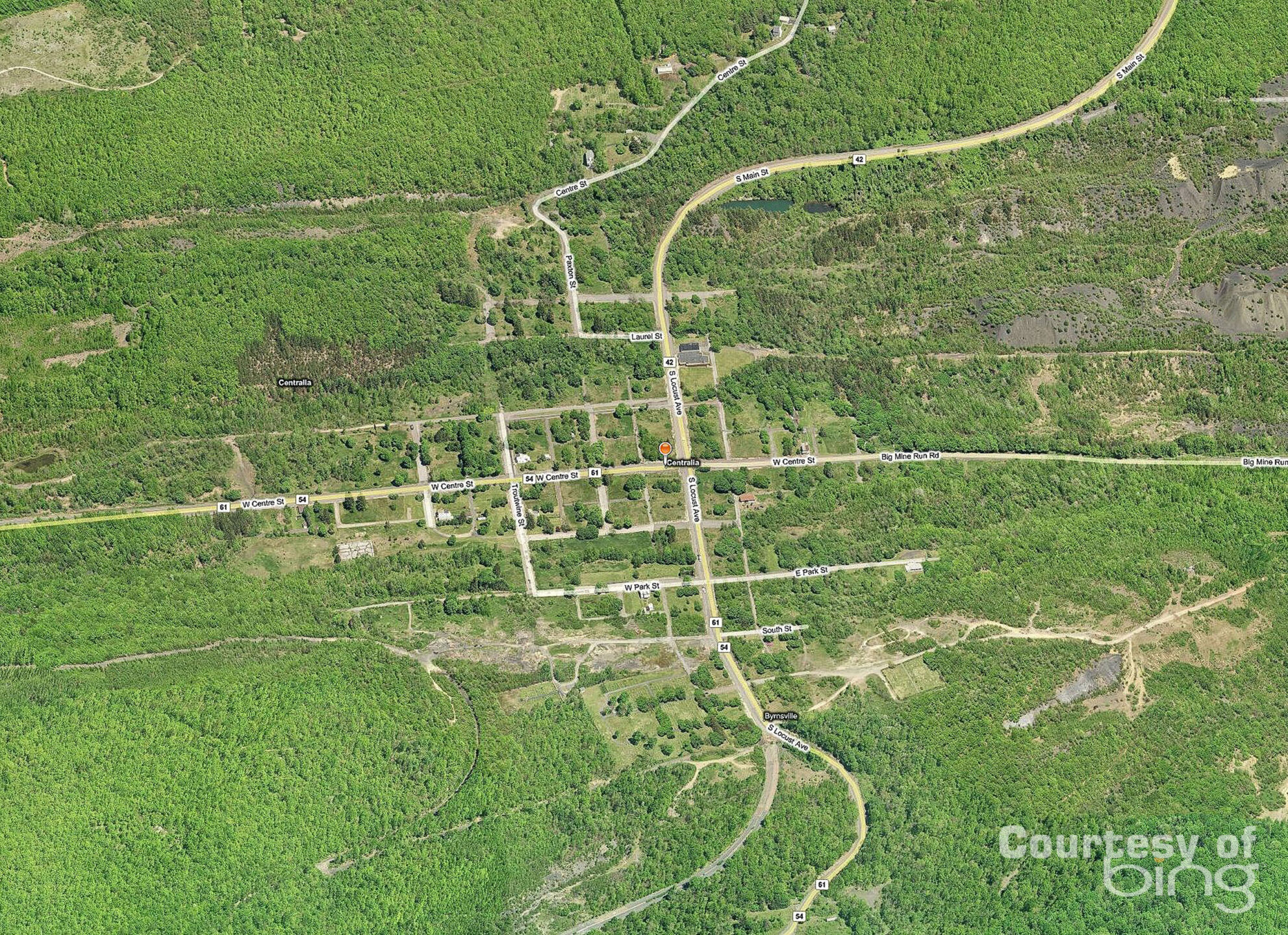
I have always had a fascination with adventure style video games. My first experience with this type of game was a text only game on my Commodore Vic 20. I can’t even tell you the name of the game at the time. I remember it was a public domain game and took you on and adventure to discover a pirate’s treasure on an Island far away. From there I grew up (yeah, not really) to play my first true 3D video game called Dungeon Master for the Amiga home computer. I spent hours running around it’s crude block graphics, hacking and slashing monsters, skeletons and the like. I guess I love actively engaging in role-playing and letting the story line whisk me away to unknown lands, where I become the hero.
Now, many years later I rarely sit down and take time to play such video games. An occasional shooter holds my attention for a week or three. Even still, there has been the exception here and there to the throwback adventure game. A particular game called “Silent Hill” stands out. A dark twisted tale that casts you into an altered state, a nightmarish non-sensible tale of horror which at times defies to make any sense at all. But then again, sometimes our dreams and nightmares fail to make any sense to us as well. If you have played the game, you know, it has a certain style, a certain flavor. I always wondered who originated the vision for the Silent Hill games and what influenced or inspired the story writers.
Before this particular trip, I hadn’t received answers to most of my questions about Silent Hill and its origins.
One of my recent passions has been photography. So, I spent the summer finding interesting places to “shoot”. I work six days a week, so I usually only get one day a week to adventure therefore, my trips to adventure are within a certain radius of where I live. Generally, I will scour the web for interesting places and/or stories that lead me to these places. I use Google Maps, Bing Maps, Wikipedia, or any combination in concert to gather my data. In one of my many web travels I punched in “Ghost Towns” on a whim and maybe it was my quest for adventure creeping back in, or maybe it was luck. But I came across a real life “ghost” town called “Centralia” PA.
Excerpt from Wikipedia: It is not known for certain how the fire that made Centralia essentially unlivable was ignited. One theory asserts that in May 1962, Centralia Borough Council hired five members of the volunteer fire company to clean up the town landfill, in an abandoned strip mine pit next to the Odd Fellows Cemetery. This had been done before Memorial Day in earlier years, when the landfill was in a different place. The firefighters, as they had in the past, set the dump on fire, and let it burn for a time. Unlike in earlier years, however, the fire was not extinguished.
Other evidence supports this theory, as stated in Joan Quigley’s 2007 missive, such as the fact that one of two trash haulers (Curly Stasulevich or Sam Devine) dumped hot ash and/or coal discard from coal burners into the open trash pit. The borough, by law, was responsible for installing a fire-resistant clay barrier between each layer but had fallen behind. This action allowed the hot coals to penetrate the vein of coal underneath the pit and subsequent subterranean fire. Quigley cites “interviews with volunteer firefighters, the former fire chief, borough officials, and several eyewitnesses, as well as contemporaneous borough council minutes” as her sources for this explanation of the fire. Another theory of note is the Bast Theory. It states that the fire was burning long before the alleged trash dump fire. However, due to overwhelmingly contrary evidence, few hold this position and give it little credibility.
The fire remained burning underground and spread through a hole in the rock pit into the abandoned coal mines beneath Centralia. Attempts to extinguish the fire were unsuccessful and it continued to burn throughout the 1960s and 1970s. Adverse health effects were reported by several people due to the byproducts of the fire, carbon monoxide and carbon dioxide and lack of healthy oxygen levels.
In 1979, locals became aware of the scale of the problem when a gas-station owner and then mayor, John Coddington, inserted a stick into one of his underground tanks to check the fuel level. When he withdrew it, it seemed hot, so he lowered a thermometer down on a string and was shocked to discover that the temperature of the gasoline in the tank was 172 °F (77.8 °C). Statewide attention to the fire began to increase, culminating in 1981 when 12-year-old resident Todd Domboski almost fell into a subsidence four feet wide by 150 feet (46 m) deep that suddenly opened beneath his feet in a backyard.
In 1984, Congress allocated more than $42 million for relocation efforts. Most of the residents accepted buyout offers and moved to the nearby communities of Mount Carmel and Ashland. A few families opted to stay despite warnings from state officials.
In 1992, Pennsylvania claimed eminent domain on all properties in the borough, condemning all the buildings within. A subsequent legal effort by residents to have the decision reversed failed. In 2002, the United States Postal Service revoked Centralia’s ZIP Code, 17927.
The Adventure
As of my first visit in 2008, the residents there were all but gone. They say that four families, including a 93-year-old man who once held the position of mayor, still reside there. There are many urban legends about Centralia so the thought of going there was very intriguing to me. Continued reading led me to find out that the director of the “Silent Hill” movie, directly influenced by Centralia, designed many elements of the film based on this small town in PA. So, my girlfriend and I decided it was a must to check this place out.
I am not going to go into detail on how to get to Centralia. If you are reading this, you will know how to find your way if you wish to visit. The trip from my home is just 135 miles away but the trip seemed to take forever. I am not sure whether it was just the winding roads through PA. Or if it was the anticipation of what we might find in this City on fire. I had read all the stories online, seen photos. So, I was excited, scared, and wrapped in many emotions that day. I had no idea what we would find in Centralia, if we would find anything at all.
After what seemed like days of travel, we finally arrive at our destination, well, almost. On our first pass, we do just that. We drive right through the little town without even knowing we were there. The state has done all it can to keep onlookers out of the area. Everything but installed barbed wire and electric fences that is. Unfortunately for them, a main highway has to pass right through the area so just blocking it off will not work.
As we are driving right by our destination, we notice several cars pulled off to the side of the road. People with cameras wander here and there. I thought, this must be the place. But there’s nothing here!? We pull off the main road and down a side street and park by a large strange looking white house. On the side of this quite large white house are what appear to be 5 large chimneys running from cellar to rooftop. A very strange sight for sure but after some sleuthing, we discover that these “chimneys” are actually supports that reenforce the structure from collapse.
We get out of our vehicle and begin to sheepishly walk about. As we walked around, a sense of unease crept over me, almost as if we didn’t belong there. Not a, “Hey you are trespassing” feeling, but a “you are not safe here” feeling. There are still a few houses with people living in them although, you never see any of these people.
In the distance we see a hill of dirt and stones, so we walk. After about 250 yards of hiking, we come to a barren hilly area of rocks and debris. Various folks are walking around and staring at the various mounds of ash and poking the ground. We follow. Little do we know it but we are right in the middle of the Centralia dump. The very dump where the fire started, and yes Virginia, it is still burning, and it is very dangerous.


Rising from small vents on these various mounds are plumes of smoke. Holding twigs or branches up to these vents will burn them as the heat is around 1500F at some of these vents. As we look around a bit, we notice these vents are everywhere. We start to literally get a sinking feeling. We had a feeling that at any minute, the ground could give way beneath us, swallowing us in a fiery blaze. And then…

As if right on cue…life emerges in the frame. A small plant of the unknown variety is growing vibrantly right next to a vent spewing death from below. Centralia it seems is starting to show signs of biodiversity. It is said it snows here every year, but none of the snow ever accumulates. Thus, creating a greenhouse bubble environment, causing plants to change the way they grow and supporting species that may not normally be found in PA.

After wandering around the dump site for a bit we notice several areas sinking into the depths of the fire.

Among this sinking, to the west we see a gigantic mound of earth that nearly dwarfs the surrounding hills. Other than this most obtrusive mound, most of the hillsides are sloping and sliding downward, almost rushing to get underground. Dead trees and bushes dot these nearly wasteland-like hillside

Just as we leave the dump site, I notice an abandon church off in the distance. Looks to be boarded up but still in pristine condition. To me it was a direct reflection of the lost faith of Centralia’s (editor’s note: The Church was not actually abandoned as we found out later.)

From our vantage point we wind our way down another trail, mind you, not knowing where we are going at all. All we know is that the Internet warned us to stay on the well-traveled paths. What this really means is a crap shoot as Most of the “paths” here are overgrown, if not all of them! I was becoming more fascinated with Centralia, yet scared to death I might step someplace I shouldn’t. As we wind on through the thicket, stepping lightly, we come to what looks to be a street. There are curbs and some pavement, but most is overgrown with plants and grass and the like.

At the beginning of the street was this large glorious cherry tree, dead of course. A direct symbol that even the strongest cannot survive in this harsh and dangerous environment.

Everywhere in Centralia you are reminded of death, dying, or ghosts of the past. At the end of the street with the dead cherry tree we found a beautiful hand laid stone wall. At this point it struck me hard. This was the first evidence that someone lived here. Someone took the time to build this incredible stone wall, only to be extricated from their home by a force that no wall could stop.
After pondering on the wall and the fate of Centralia we looped back around to our vehicle. As we left that little side street to go park where everyone else was parked, I stopped at the intersection and snapped this photo. One of my favorites from the day.

A park bench awaits. Not for a resident. Maybe a visitor? Or maybe, destruction. The hand painted print on the bench has been changed over the years. It used to bear the Zip Code for Centralia (17927), which in 2002 was revoked by the US Postal Service. It now proudly displays the founding year of Centralia, 1866. One wonders how long it will be before it bears the death date of the forgotten town as well. From the bench we park up the road a bit and begin to explore more. This time we make it to the appropriately named “Odd Fellows” Cemetery. The first vision to greet you at this tucked away sanctuary is an ominous black iron gate.

The gates open position beckons even the wariest adventurer. We enter the cemetery flanked with a warning sign exclaiming escaping gasses and dangerous possibilities of cave ins. We are promptly greeted with a black canister just inside the gates.

This is the first we see of its kind. It’s a vent. A device to relieve pressure from the depths. Upon further investigation we notice there is one at each of the four gates to the smallish cemetery. Feeling more confident now that we haven’t perished yet, we venture into the cemetery. The first thing we notice is that even though this is an abandon town for the most part, the cemetery looks as though it is tended to everyday.

As we are about to leave the “Odd Fellows” cemetery I notice a small square tilting stone.

It’s a 4-way gravestone. Meaning the stone is the centerpiece to 4 separate graves. The oldest person listed on the stone is Mr. John T. Pickens born 7.5.1850 and died 12.15.1900 at just 50 years old. Which means he was probably a coal miner back at the birth of Centralia. The other sides of the gravestone are the resting place of what appears to be his son and his brother, John JR. and Bill Pickens respectively. Oddly enough, this stone is actually made of steel.

These were the folks that bred this town. That built it. That all died young and before the time of the fire. There spirits must now overlook the abandon town they built forever. A very sobering thought indeed. Upon leaving the cemetery, a sign of rebirth, of life.

A butterfly goes about its business pollinating and spreading the growth of flora in this wasteland.
We wander around the streets of the empty town a bit more. Searching for the abandon route 61. The fabled heaving, smoldering road where steam rises from huge fissures created by the fire below. We make our way back to the vehicle. I search google maps with my Blackberry but am unable to connect to the server. The eerie sense of isolation and abandonment creeps back into my psyche. We head out of Centralia feeling slightly defeated. As we continue a bit south my companion urges me to stop for a restroom break. As I do I notice a familiar scene from one of the Internet sites. We pull off the road. As my partner seeks out a suitable “Bathroom” I wander around and keep a watchful eye. Suddenly I happen on an old rusty piece of machinery.

Not sure what it is. Probably some sort of machinery left over from the miners. As soon as I snap the shot, I notice a berm about 5 feet tall. I venture to take a look.

Eureka!! We have found it! The old Route 61. Well at least one end of it. Now we knew it existed. With no steam or smoke visible we decide to head back north and find the other end. Mind you, this end was so well hidden I nearly missed it, standing right in front of it. We make it back to the top of the hill, right back to where we parked to get to the cemetery. Low and behold, not 100 feet from where we parked was another berm disguising the booty we had searched for. This was the beginning of the old Route 61. It once was open with just a chain guarding its entrance. It was only after some not-so-bright people tried to drive down the road did they build the berms to keep everyone out. Everyone but those willing to hike it.

Descending Route 61, a 2100-foot hill leads to Ashland. Along the way, graffiti and obscene drawings mar the pavement, evoking a sense of desecration in what should be a sacred place. It’s disheartening how people deface everything.
Despite the unsettling atmosphere, we refuse to let it ruin our adventure. The walk becomes even more eerie as we proceed. We traverse miles of a deserted highway, with trees encroaching upon the road and towering bushes growing from the median.
The surroundings feel like something out of a suspenseful movie, with the anticipation of a tractor-trailer barreling around the bend at any moment. Eventually, we reach our destination: the renowned fissures in the road.



The heat here is incredible. And though we would like to continue our adventure, we are both exhausted from the walking. It was 80F out that day and bright sunshine. Even though we had water bottles with us it was quite a bit hotter in Centralia as you can imagine. With that, we headed back up the hill to the car.

Once I got back home and started to go through all of the photos it hit me. When we first got to the dump off to the west, we could see a huge 2000-foot-high mound of earth. It was from the old, abandoned coal mine.

To the east a majestic row of new windmills was being fired up. It was at that point the thought struck me. It was a circle. All at once I realized that Centralia was cycling. To the West, the past and to the East, the future.
I too had come full circle. From playing video games, to living them. Many questions were answered from that trip. I urge you to recognize your circles and complete them. There are many more awaiting all of us out there…
I have returned to Centralia many times since.



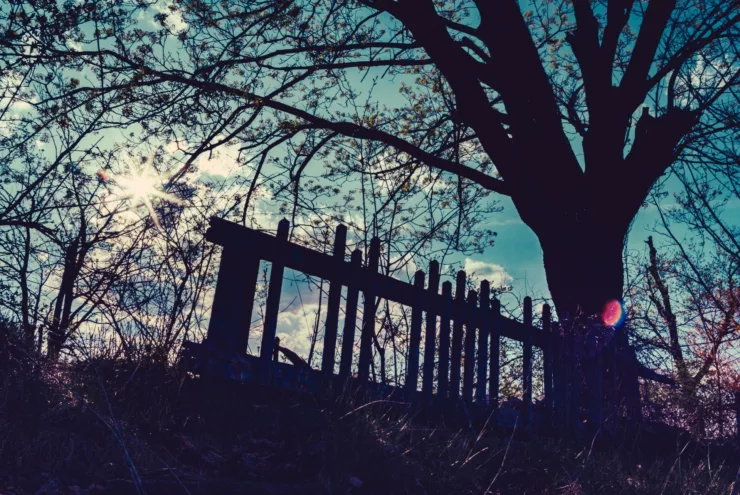
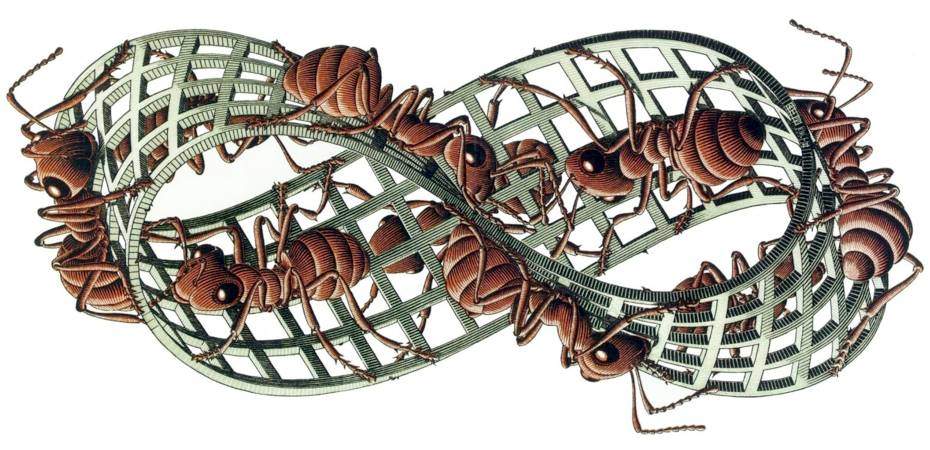

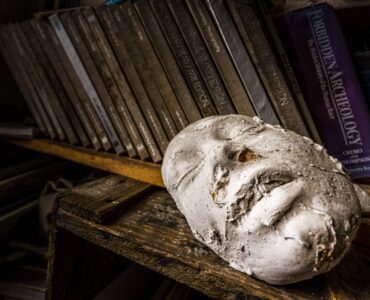
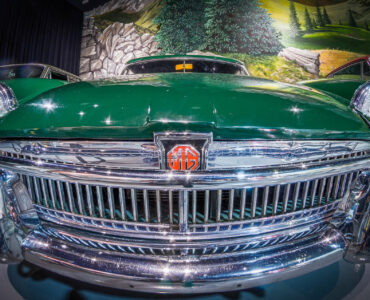
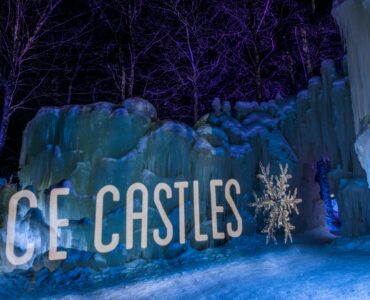





1 comment